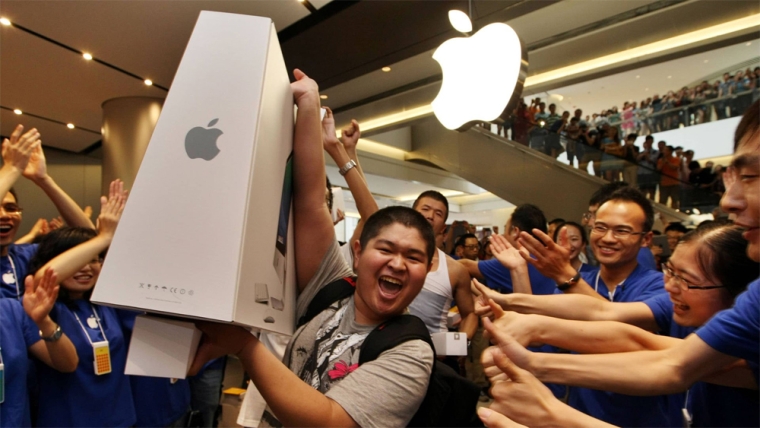
By Mark Tanner*
While many brands in China continue to lean heavily on price-driven tactics and short-term sales promotions, at China Skinny we’ve long championed the value of brand building and emotional connection. Encouragingly, we’ve recently seen a growing number of brands shifting their focus toward premium consumers and moving away from unsustainable price wars.
Last week, the importance of brand building was further reinforced by new analysis from Peking University, Sun Yat-sen University, and Alibaba’s Taobao and Tmall. Their China Online Consumer Brand Index (CBI) offers robust, data-backed evidence that Chinese consumers are increasingly favouring brands with strong equity.
Spanning millions of brands and nearly a billion users, the CBI provides a behaviour-driven lens for evaluating brand performance online. The findings clearly show a shift in consumer preference – from price-led purchasing to choices anchored in quality and brand strength. Remarkably, every consumer category saw a rise in preference for branded products between 2023 and 2025.
Success for brands in China now hinges more on resonance and relevance than on low prices or wide availability. The CBI offers a timely signal of how “quality consumption” is reshaping the e-commerce landscape, and what global brands need to do to remain competitive.
From Price Wars to Quality Wars
The index tracks how much people are spending and on what, but it also measures how they are spending: what kinds of brands they choose, how satisfied they are, how loyal they become, and whether the brands are perceived as innovative. The analysis reflects a genuine shift away from being driven by low prices and discounts.
The top-500 brands and the metrics they are measured on can be found here. This pivot toward quality-based consumption presents an enormous opportunity – but also a higher bar – for foreign brands.
What findings from the CBI tell us:
1. Online is now the default entry point
China has been the world’s largest online retail market for 12 consecutive years, with around 975 million online shoppers. As a result, digital-first strategies are often the most efficient (and sometimes only) way for foreign brands to build presence, especially for those without deep physical retail infrastructure and partnerships. Foreign brands entering China should aim to optimize their digital storefronts to be visible to consumers. Data from online sales can help steer decisions about where to target in China’s deeply fragmented offline world.
2. The brands who earned a spot in the CBI500 didn’t get their because they’re the biggest
The CBI500 ranks the top-performing brands purely based on online consumer behaviour – not marketing spend, surveys, or legacy recognition. Surprisingly, several emerging domestic brands with strong innovation and niche appeal are now often outpacing established global players. This illustrates that global brands cannot rely solely on their name or history. To compete with nimble Chinese counterparts, they must stay culturally tuned-in and rapidly adapt through localised product design, marketing formats like livestreams, and campaign themes that resonate with young, digital-savvy shoppers.
3. Mega cities are not leading in consumption quality
Whilst first-tier cities still dominate in purchasing power, many second- and third-tier cities are leading in average brand quality scores (CBI). These “rising cities” are demonstrating stronger consumer preference for well-rated brands, despite having lower total spend per capita. Brands should consider that high-quality growth may be more attainable in places like Chengdu, Hefei, or Hangzhou; where consumers are actively seeking high-performing brands, not just big names.
4. Youth are driving the novelty index
The index highlights rapid growth in purchases among 18–24-year-olds, especially for brands with new product lines. Gen Z is not only more likely to try new things but also to engage in social sharing, rating, and building community around brands. Tapping into this demographic means investing in constant innovation, limited-edition releases, and integrated online campaigns that feel participatory, not just promotional.
5. Opportunities to enter and compete vary by category
Lower CBI readings suggest an opportunity for less established brands to enter a market and compete. Fashion, home furnishings, pet care and food present the greatest opportunity for new brands, with CBI scores ranging from 39-60. Whereas 3C communications and smart devices, home appliances, beauty, sports & outdoors and personal care range between 68-85. Whilst your category isn’t the sole determinant of whether more established brands hold the market or not, it does have a bearing, and should be factored into strategy and tactics to acquire and maintain customers.
Toward a “Race to the Top” in China
Perhaps the most important takeaway from the CBI report is that China’s digital retail environment is maturing. The days of growth-at-all-costs and price slashing are giving way to a more stable, reputation-based ecosystem that foreign brands will be more familiar with from other markets. Whilst price-based competition is likely to persist for many brands; Government policy, ecommerce platforms, and consumers are all encouraging a “race to the top” built on innovation, authenticity, and perceived value.
For foreign brands who bring meaningful differentiation – whether through product, story, or experience – can find themselves not only surviving but thriving as Chinese strive for better quality consumption. But those who treat the market as an afterthought or roll out cookie-cutter strategies will quickly fall behind in visibility, relevance, and impact.
*Mark Tanner is the CEO of China Skinny, a marketing consultancy in Shanghai. This article was first published here, and is re-posted with permission.

We welcome your comments below. If you are not already registered, please register to comment
Remember we welcome robust, respectful and insightful debate. We don't welcome abusive or defamatory comments and will de-register those repeatedly making such comments. Our current comment policy is here.